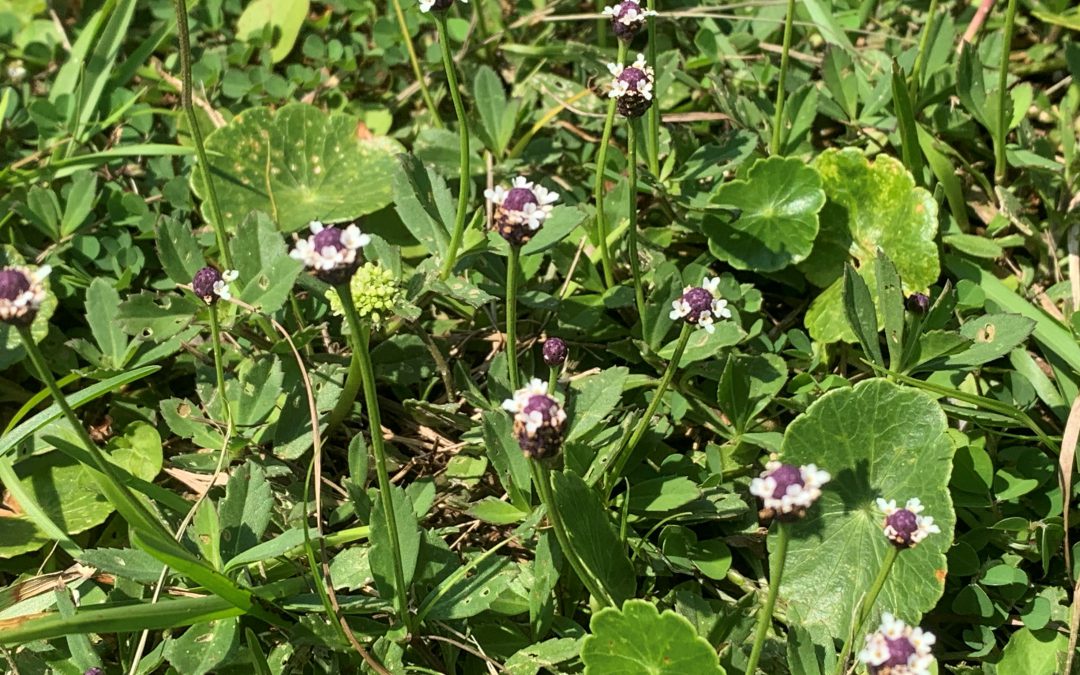
Frogfruit as a Turf Companion
Homeowners may consider growing Frogfruit, Phyla nodiflora as a companion plant in turf areas. Learn the qualities of this groundcover with UF IFAS Extension Escambia County.

Homeowners may consider growing Frogfruit, Phyla nodiflora as a companion plant in turf areas. Learn the qualities of this groundcover with UF IFAS Extension Escambia County.
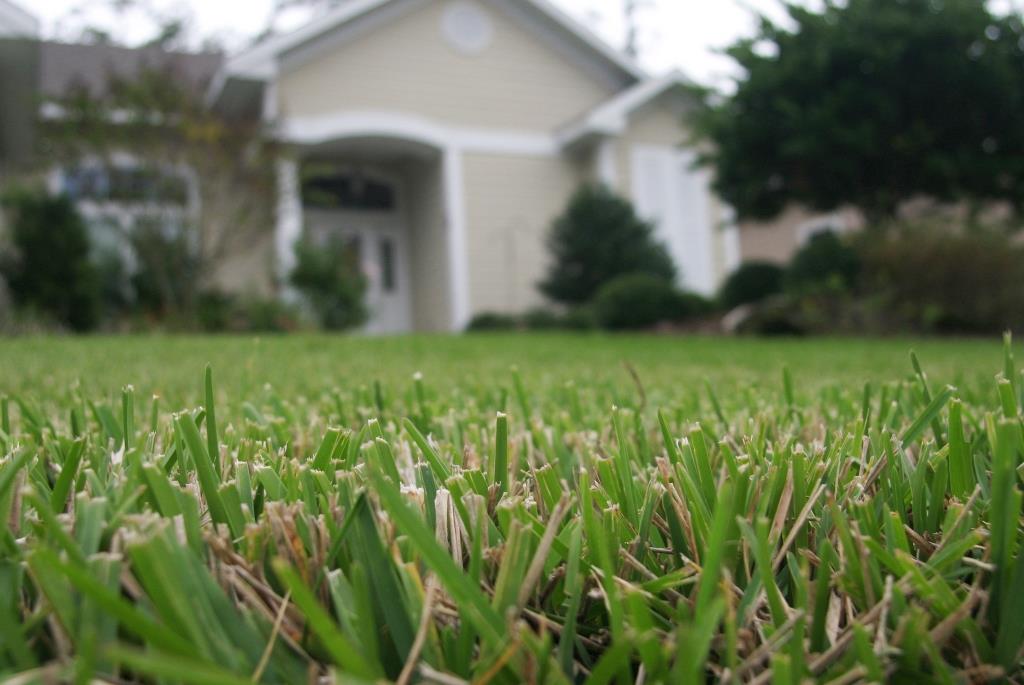
Now that we are moving into warmer soil temperatures, weak areas in lawns will have a better chance of making some recovery. However, this is highly dependent on whether or not correct lawn maintenance practices are followed. These practices include fertilizing, mowing and watering correctly.

Many North Florida lawns came out of winter weak and thinning this spring. In areas of the lawn where there is at least sixty percent cover of the desirable type of lawn grass, recovery is possible. But where there is less than sixty percent desirable cover, reestablishment should be considered.
Applying the correct type and amount of fertilizer will promote lawn recovery. To maintain a healthy Florida lawn, it’s critical to use a fertilizer with adequate potassium. In most cases, use a lawn fertilizer with equal amounts of nitrogen (first number) and potassium (third number) such as 8-0-8, 10-0-10, 15-2-15 or similar analysis. Phosphorus (second number) should be low or zero unless you have the results of a reliable soil test indicating that more phosphorus is needed. Err on the side of being light handed when applying fertilizer to the lawn. In North Florida, most lawns will do just fine with an application in spring no earlier than mid-April and a second application in summer no later than mid-September.
Follow these mowing practices for a healthy lawn.
Follow these irrigation practices for a deeper rooted and drought tolerant lawn.
Here is a link to a UF/IFAS Extension publication on Best Management Practices for a Florida lawn. http://edis.ifas.ufl.edu/ep236
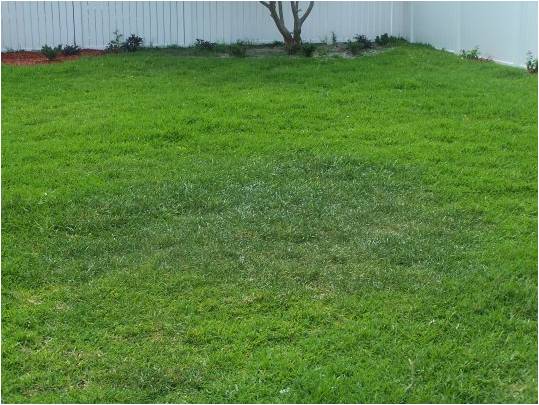
We are nearing the end of the NO MOW MARCH launch that several counties participated in this month. Maybe you have been mowing this month because you live in an area where it is required or maybe you were able to go the whole month but now you are wondering what’s next. The fact is that keeping a lawn healthy can maximize plant use and minimize environmental adverse impacts. In this article we will talk about the steps to help keep a healthy lawn.
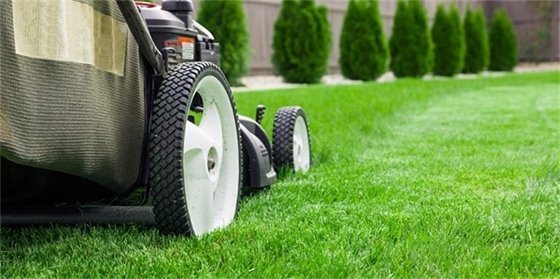
Mowing is one of the most important aspects of maintaining a good quality lawn. When using proper mowing practices along with fertilization and irrigation, you can increase the density of your turfgrass. This produces a tighter lawn that the weeds cannot compete with and naturally reduces those unwanted weeds. Cutting height and frequency are the most important factors to consider when mowing. This will vary by turfgrass species, cultivar, and maintenance level of lawn desired. If too much leaf tissue is removed at one mowing cycle it can cause your turfgrass to stress. Over time the damage could be insects, disease, drought and sunscald. Leaf clippings are beneficial to the turf and give back nutrients and organic matter to the lawn. Some other helpful tips are to keep your mower blades sharp, do not mow grass when wet (I know this can be very difficult when we get into the rainy season.), and if you have several properties that you are mowing it is good to remove clippings and weed seeds from the mower. These tips can help improve the appearance and greatly reduce insect and disease infestation. For more details on your specific type of lawn refer to this document: ENH10/LH028: Mowing Your Florida Lawn (ufl.edu)
Turf can benefit from fertilization but only if done correctly. Timing and the appropriate rate can help maintain a healthy Florida-Friendly lawn. The turf roots and shoots need to be actively growing and this can vary depending on the use of the area, water stress (presence of rain or irrigation) and the environment of where the grass is grown. For North and Central Florida active growth occurs from spring through fall. Our neighbors down in South Florida can see growth year-round. Fertilizing when your grass is dormant not only wastes time and money, but it may also contribute to nutrient leaching or runoff. This is the perfect time of year to do a soil test to see exactly what nutrients are available and what your soil is lacking. This article will give you more insight on soil testing for Florida turfgrasses SL 181/SS317: Soil Testing and Interpretation for Florida Turfgrasses (ufl.edu)
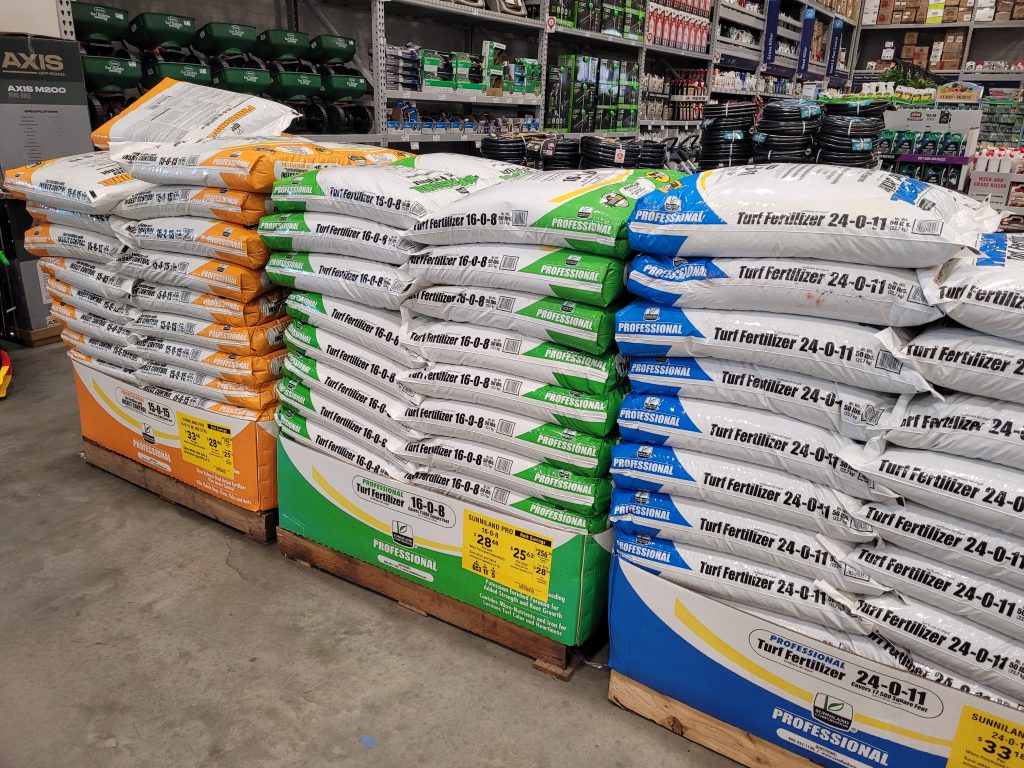
There are many benefits to having healthy turfgrass. It can slow stormwater from moving to water bodies. Healthy turf can filter and remove contaminants and help protect our ground water. Leaching and erosion are also reduced when you have healthy dense turfgrass. In Florida there are environmental stresses that may alter the required management level and health of the turf. Using proper cultural practices can alleviate the effects of stress. For instance, during times of drought do not try to fertilize until water is available, increase mowing heights in shaded areas to avoid thinning, and avoid effects of vehicle and foot traffic on stressed turf. ENH979/EP236: Homeowner Best Management Practices for the Home Lawn (ufl.edu)
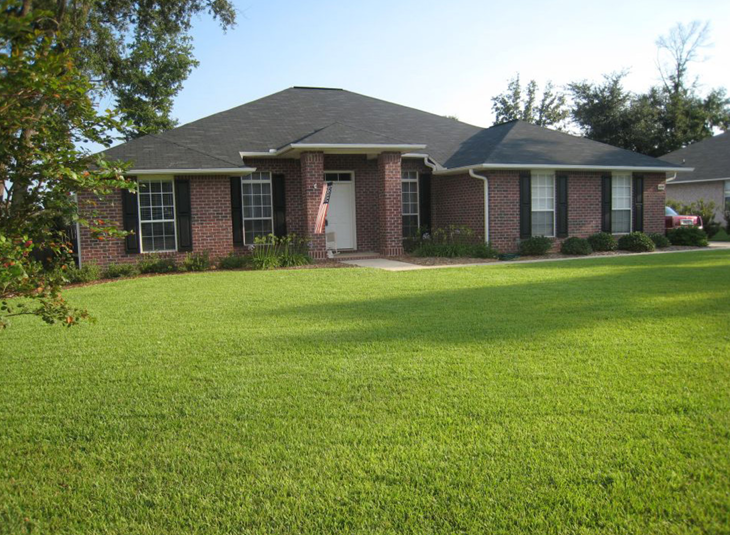
Just by hitting on some of these key aspects such as the mowing height, cultural practices and the timing and rate of your fertilizer can make a difference in the health of your turf. Remember a healthy dense turf means less weeds and less insect and disease pressure later in the season. For more information or questions concerning your lawn please contact your local extension office!
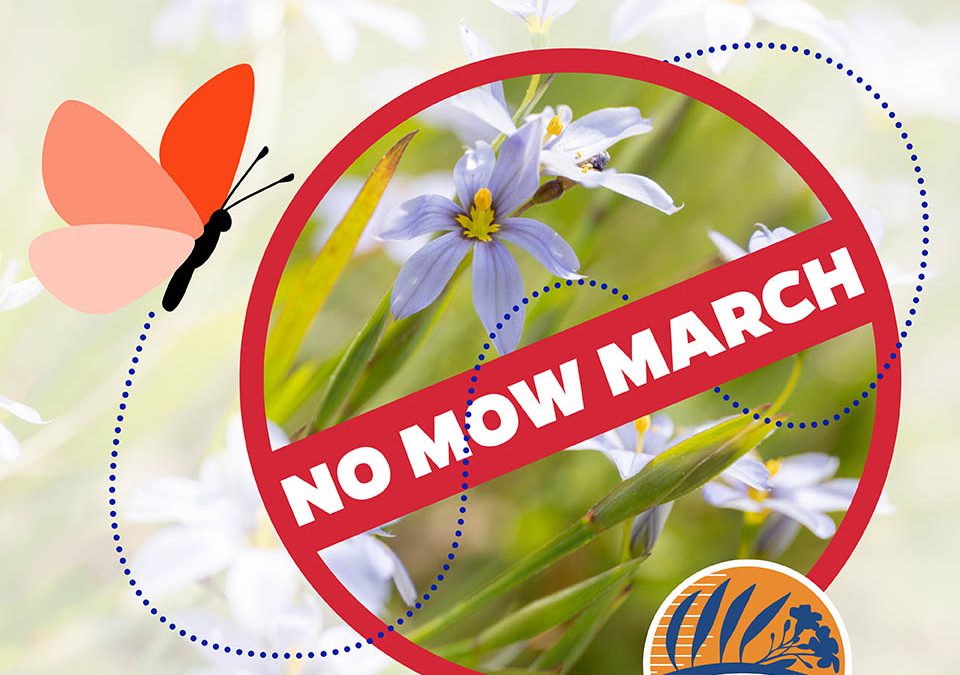
Need an excuse to not mow your lawn this month? UF/IFAS Extension agents in the Florida Panhandle are asking residents to skip their soon-to-be-weekly outdoor chore until the calendar flips to April.
The idea for “No Mow March” is borrowed from “No Mow May,” a concept begun in the United Kingdom that has now spread to northern parts of the United States.
“Obviously, our lawns are growing way too quickly by the time May rolls around,” said Beth Bolles, UF/IFAS Escambia County horticulture agent who is leading the pilot effort this year. “Here in North Florida, March is our transition period, when grass is exiting dormancy. But it’s also when pollinators are starting to become more active, so it’s the perfect time to celebrate them and promote their health and habitat.”
Bolles is quick to point out, though, that the month is about more than just turf.
“We recognize that some communities have rules to follow regarding their lawns,” she said. “There are other things you can do to encourage pollinators to visit, whether it’s container plants or adding new shrubs or pollinator houses. We encourage everyone to find their own way to participate.”
The first step in participating is to sign the pledge at go.ufl.edu/NoMowMarch. Visitors can also use the website to find virtual or in-person events geared to the topic, learn tips for adhering to homeowners association guidelines while still promoting pollinators, and record observations to a No Mow group on iNaturalist.
Follow the Gardening in the Panhandle Facebook page to stay in the know throughout No Mow March.
—Kirsten Romaguera, UF/IFAS public relations specialist,
O: 352-294-3313, C: 936-689-2754, kromaguera@ufl.edu
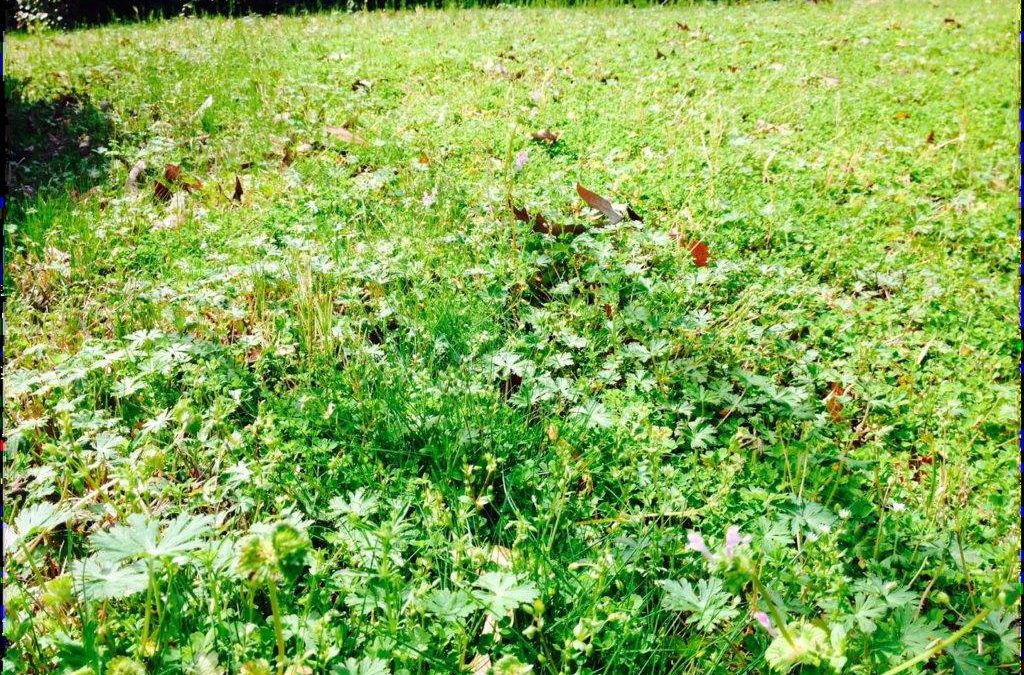
Weeds are basically unwanted plants or plants growing out of place. Proper identification and some understanding of how and why weeds are present in a lawn are important when selecting the best management tactics. All turf weeds can be grouped into one of three life cycles: annual, biennial, or perennial.
Annual: Produces seeds during one season only
Biennial: Produces seeds during two back-to-back seasons
Perennial: Produces seeds over many seasons
Knowing the types of weed previously present in an area also can help one to be better prepared and what control measures to employ in the future.
Weeds may appear in multiple categories, either broadleaf, grass, or Sedges/rushes.
Broadleaves, or dicotyledonous plants, have two cotyledons (seed leaves) when the weed seed germinates.
Appearance: Broad, flat leaves with net-like veins and usually have showy flowers.
Common types: Clover, ground ivy, dandelions, chickweed, plantain, henbit, beggarweed.
Grasses are monocotyledonous plants that have only one cotyledon, or seed leaf, present when seedlings emerge from the soil.
Appearance: Narrow leaves with parallel veins in their true leaves. Hollow rounded stems.
Common types: crabgrass, goosegrass, crowfoot grass, bull grass, annual bluegrass, alexander grass, cogon grass, torpedo grass, and smut grass.
Sedges/rushes. Both favor a moist habitat. Appearance: triangular-shaped, solid stems, while rush stems are round and solid.
Common types: yellow and purple nutsedge and, to some degree, globe, Texas, annual, and water sedge.
One of the first steps in managing weeds is to have a healthy dense lawn/ turf to provide shade that prevents seed germination. Having a healthy lawn depends on turf species selected – making sure you put the right plant and right place. Other factors that influence a heathy turf and a reduced amount of weeds include proper cultural control, fertilizing regularly, mowing at the appropriate height, watering deeply, reducing traffic, pest control, and sanitation. If you only have a few bothersome weeds in your lawn, you may be able to dig them up by hand—but if your lawn is overrun with weeds, you may need to start from scratch. If you decide to start from the beginning, you have a choice ahead of you. Do you want to lay down seed or sod? There are pros and cons to each.
Seed
Pros: Less expensive, more variety
Cons: Takes longer to germinate, can only lay at certain times of year depending on grass type
Sod
Pros: Instant grass, can lay any time of year, requires little maintenance
Cons: More costly, less variety in grass can mean less healthy lawn overall
To prepare the soil after either method, make sure you till it down to roughly 6 to 8 inches.
Supporting information for this article can be found in the UF/IFAS EDIS publications (Weed management for Florida lawns) https://edis.ifas.ufl.edu/publication/EP141 or contact your local Extension Office!

Summer should be the time to relax and enjoy the fruit of all the hard work performed in the landscape over the previous winter and spring. However, there are still some essential tasks that need to be completed during the summer. Perform them in short energy bursts early in the morning or late in the evening.
1. Aerate Your Lawn
If your yard is starting to look weak and thin, even with fertilizing and proper moisture, it may need aeration. Aeration, which is creating channels into your lawn, allows water and nutrients to reach the deep roots of your grass more efficiently.
To test if you need to aerate your lawn, shovel up a patch of grass to a depth of at least four inches. If the layer of thatch is a half-inch thick or higher, your yard would benefit from aeration. There are self-drive aeration machines and tractor-pulled devices you can rent to make quick work of large areas. For smaller areas, simply punching multiple holes with a pitchfork will do the job.
2. Fertilize
Turf grass often displays a yellow color during the mid-summer rainy seasons due to the heavy rains flushing nitrogen away from plant roots. If your lawn is looking sad and yellow, chelated iron can often give a temporary green-up. Iron is not a replacement for nitrogen, but it can work well during our summer rainy season.
If you soil test revealed a potassium or magnesium deficiency, summer is a good time to make the last corrective application. Potassium (K) is an essential macronutrient. Fertilizer bags typically show the percentage of potassium in a product as the third number displayed on the front of the bag (e.g., the “8” in 16-2-8). Potassium acts as a “vitamin” for turf grass, increasing root strength, disease resistance and cold hardiness.
Magnesium (Mg), also a macronutrient, is essential for the production of chlorophyll, necessary for photosynthesis, and also plays a part in the movement of carbohydrates from leaves to other parts of the plant.
3. Don’t Mow Too Short
It’s a natural inclination to want to mow your grass as short as you can, so you have the longest time until you have to mow it again. However, giving your grass a buzz cut every time you mow can hurt your lawn over time.
While some turf grasses can be mowed relatively short, like Bermudas and some Zoysias, most grass types shouldn’t be cut shorter than two-and-one-half to four inches high. Mowing shorter than that can damage the growth point and leave it susceptible to disease and pest infestation. It can also dehydrate the grass and lead to long term damage.
5. Water Infrequently but Deeply
One common mistake made by many is watering too often and too shallow. When only given frequent shallow waterings, grass will begin to grow their roots upwards to take advantage of the small amounts of water, which makes weak and unhealthy. The grass becomes even more dependent on water and very susceptible to disease and insect attack.
Try watering only once or twice a week, but for a considerably longer time so that the water can penetrate deeper into the soil and encourage downward roots. Ideally, each irrigation zone is calibrated to determine the length of time it take to deliver ½ – ¾ inch. Then set the system to run every 3-4 days for that number of minutes. While checking the irrigation delivery system, make sure the rain shut-off device is working and set to the same ½ – ¾ inch.
6. Prevent Mosquitoes
Summer rains on a nearly daily basis lead to lots of standing water. In less than one inch of water, hundreds of mosquitoes can hatch 3 -5 days later. Not only are these blood-sucking pests annoying, but they can also transmit dangerous diseases like West Nile and Zika Virus. Even without disease, their bites are painful and irritating.
To prevent mosquitoes, make sure no standing water is allowed to remain in your yard, either in low points or in empty containers like flower pots or wheelbarrows. Any amount of stagnant water is the perfect breeding ground for mosquitoes. Take a walk around the yard, dumping out water and disturbing the oak and magnolia leaves that are acting a collection cup. Treat birdbaths and water features with floating “donuts” specifically designed to kill mosquito eggs.
While getting tasks done in quick morning trips to the yard, make sure to keep hydrated. Heat exhaustion can happen fast.